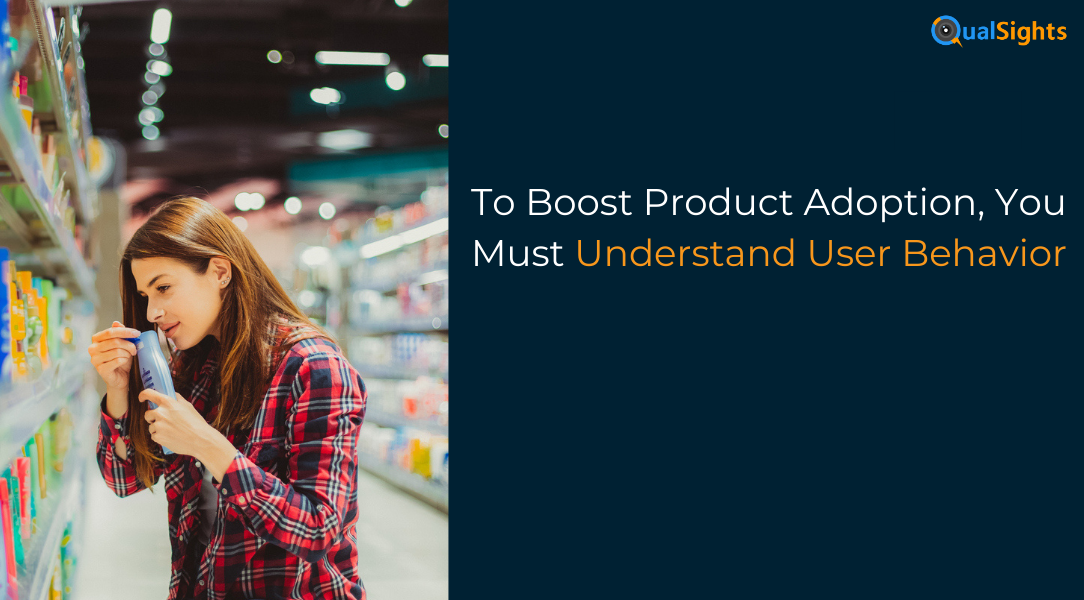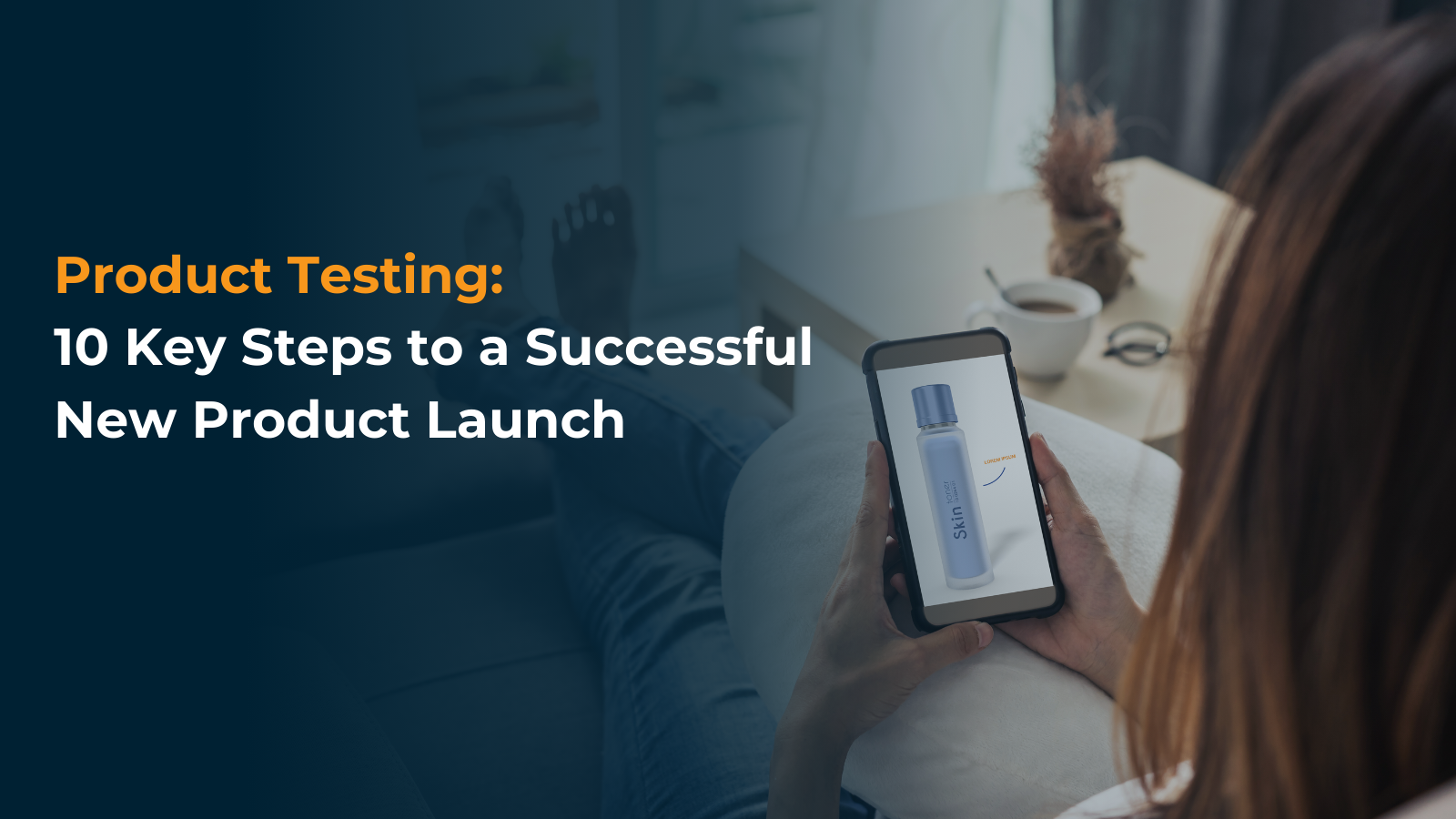To Boost Product Adoption, You Must Understand User Behavior

Are your customers still searching for “the one” — or have they found it?
That’s the heart of the question for product adoption. When a consumer successfully adopts a product, it becomes part of their life. They don’t need to keep looking for something better; they won’t be tempted away by an enticing new brand. Whether it’s a toothpaste flavor that makes them want to brush more or a dish soap so effective that doing the dishes is almost (gasp) fun, they know they’ve found the only product they need for the job.
Let’s take a closer look at how to measure product adoption and how you can use a deeper understanding of consumer behavior to boost product adoption. First, though, let’s clarify what we mean by product adoption.
An Overview of Product Adoption
Product adoption refers to both the process by which a consumer integrates a product into their life and the result of that process.
A successfully adopted product is one that’s used regularly, but that doesn’t have to mean it’s used daily. After all, few people will reach for a floor-cleaning solution or a deep-conditioning hair treatment every day. What matters is that every time the consumer notices that their floor is dirty or their hair is feeling dry, they reach for one specific product as a matter of habit.
That habitual loyalty carries over to shopping. Loyal customers don’t have to think about what brand of toilet paper to buy in the store or what fabric softener to add to their online shopping cart. They already know the answer.
By contrast, a product that hasn’t (yet) been successfully adopted is subject to churn. Maybe a shopper doesn’t love the way the product smells or how the bottle feels. Or maybe they enjoy the product itself, but find the dispenser pump aggravating and wasteful.
Whatever the reason, they don’t settle down with that product. They keep looking for a better option. And that’s a loss for CPG companies that want to create products that inspire loyalty.
How do companies evaluate adoption, though?
How to Measure Product Adoption
Measuring product adoption boils down to understanding consumer behavior. There are two primary approaches to gathering product adoption metrics:
- Quantitative studies: Quantifying product use involves understanding how much of a product consumers actually use. That combines two separate inquiries: how often people reach for the product and how much of it they consume with each use.
- Qualitative research: Qualitative analysis asks consumers to describe their thoughts and feelings about a product. Understanding what customers think and how they feel about products clears the way to creating new products that consumers will want to commit to.
Market research isn’t just for new products! Even the most tried-and-true product may need to evolve with the times, but you wouldn’t want to change the essential traits of your product that have inspired consumer loyalty. Understanding how consumers use products and how they feel about those products lets you keep the best aspects of a product while modernizing or adapting it to suit changing needs.
Let’s look at each of these types of research in turn.
Quantitative Product Testing: What People Do With Products
Quantitative market research studies provide hard numbers about how consumers use products. Here’s a rundown on how to do this:
- Quantitative research includes questions about how consumers use specific products and what they recall about that use. Diary studies are a way to understand product usage over time. Just be aware that consumers participating in diary studies will benefit from regular reminders to provide this information on an ongoing basis.
- Market research may be conducted in a centralized location (like a research office) or across dispersed locations (usually within individual consumers’ homes).
Even in-home usage tests (also known as IHUTs) can fall prey to the say/do gap. Study participants rarely mean to deceive researchers during this method of product testing, but human memories are inherently flawed. Especially with products that are used regularly, people tend to incorrectly estimate their use — sometimes significantly.
Of course, understanding what people do with products doesn’t always point the way to changing their behavior. For that, you need to explore what’s driving their actions.
To learn more about cutting-edge approaches and technologies that deepen your understanding of consumer behavior, read this insightful e-book.
Evaluating Qualitative Consumer Behavior: Why People Do What They Do
What thoughts do consumers have when they reach for a product? How do they feel about it while they’re using it? What motivates them to pick up the same product over and over, and what sends them in search of something better?
Exploring those questions calls for qualitative market research. In a qualitative study, researchers ask participants to describe their thoughts, perceptions, and feelings as they think about or use a product. What do they hope their experience will be like? Does it smell fresh and clean, or does it have a harsh or too-chemical scent? Is it easy to dispense and use?
To get the most value out of your research, consider combining methodologies to uncover both the ‘what’ and the ‘why’ behind consumer behavior. Blending qualitative insights with quantitative data allows you to see the full picture—from initial thoughts and feelings to actual behavior.
Using Consumer Behavior to Boost Product Adoption
Product testing gives you a way to explore consumer behavior, so you can learn exactly what people are doing with your products and why. That lets you know what you can (and should) change so your products win over more consumers.
Maybe you’ll use the results of sensory testing to tweak your sunscreen lotion’s scent (heavier on the sea spray, lighter on the coconut). Or you might decide to change your product messaging so that consumers have more realistic expectations for what your product can do. Perhaps you should adjust your packaging or on-package labeling to dispense your product more easily or to nudge consumers when it’s time to buy more.
Whatever changes you roll out, you’ll be moving toward greater product adoption because you’ll be working from a precise understanding of consumer behavior.
Struggling to figure out why your product is — or isn’t — “the one”? QualSights can help. We make it easy to gather accurate, reliable qualitative and quantitative data about how ordinary people use products. Our innovative, in-home product usage sensors passively capture product usage in real-time without having to rely on recall of past behaviors. And our user-friendly Consumer App with regular reminders for study participants (resulting in industry-leading compliance rates) enables you to get in-context, detailed insights and explore testers’ thoughts, feelings, and perceptions while those experiences are fresh in their minds.
When you want to figure out whether consumers view your products as part of their regular routine, QualSights has the most advanced technology for collecting precise and in-context data, transformative Gen AI capabilities to analyze your data with speed, and a team of in-house research experts that can capably step in and oversee your research design, analysis, and reporting. Contact us today to learn more.


